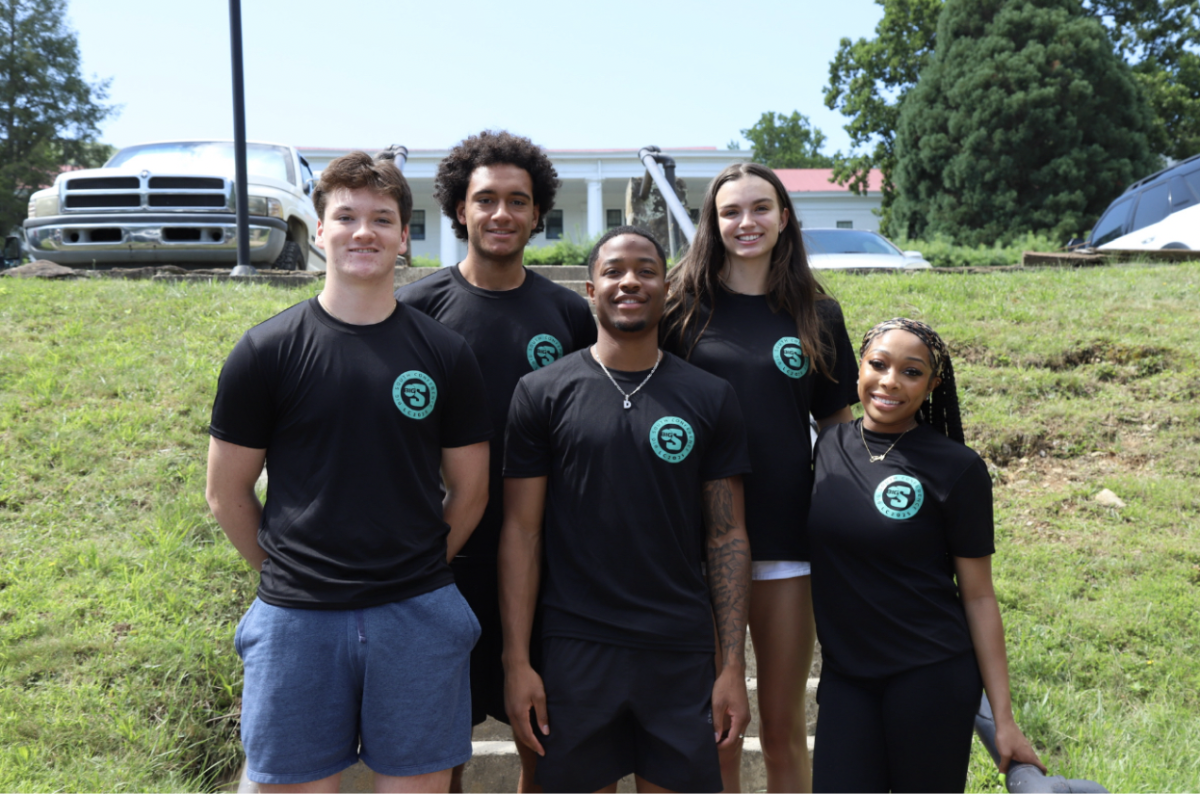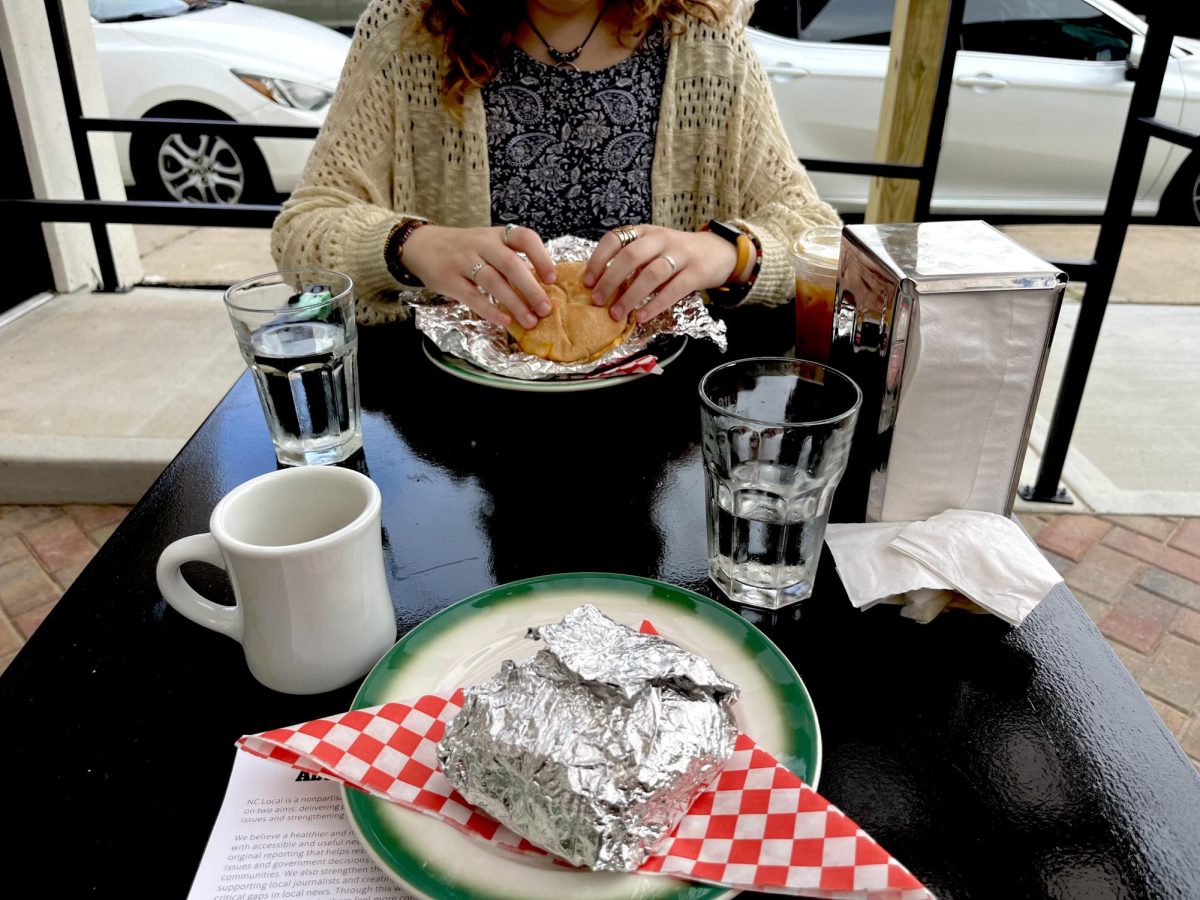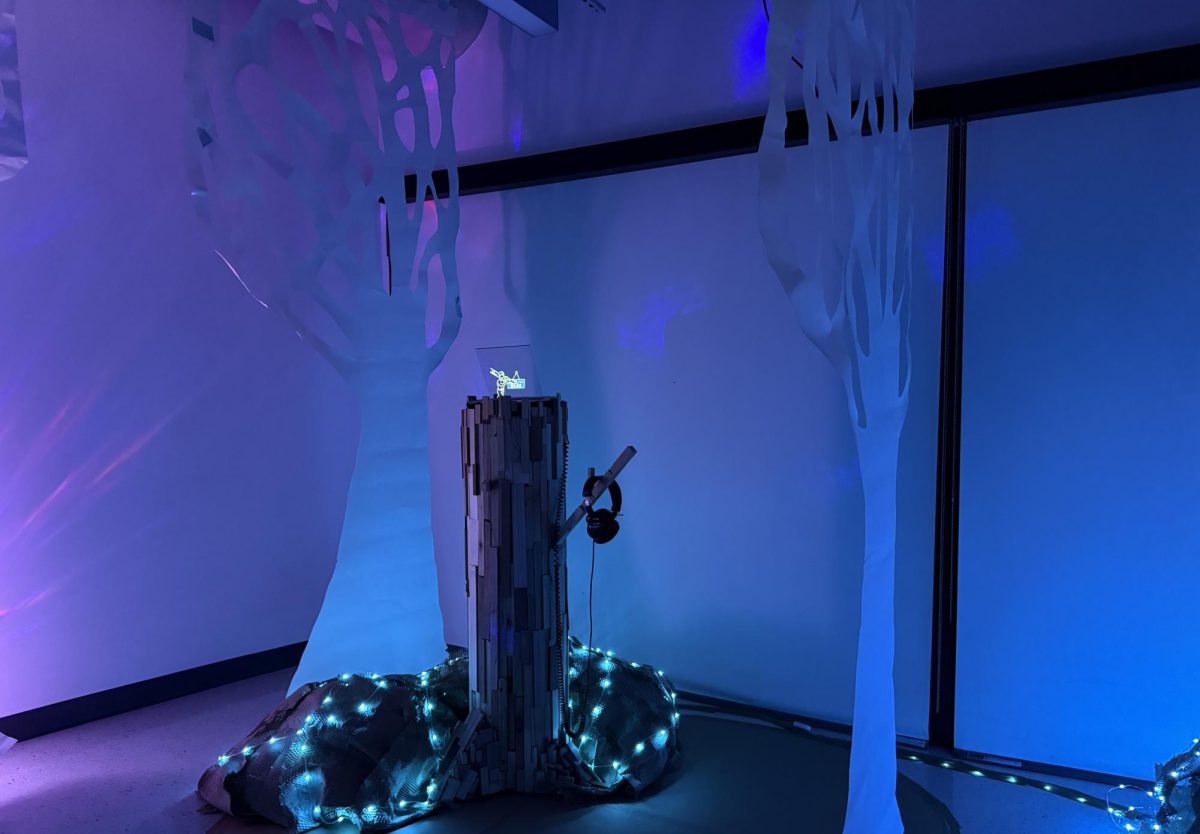
Photo by Amanda Cline.
By Valerie McMurray – [email protected] – Asst. News Editor | Sept. 10, 2014 |
Four UNC Asheville faculty members addressed the significance of Michael Brown’s death, the prevalence of racism and structural violence in America during a discussion panel in Highsmith Union Sept. 3.
“Yes, the murder of Brown is tragic. But what is also apparent to me — I think this will likely become — with respect to this country’s recent history, yet another failed opportunity for America to frankly examine its history,” said Marcus Harvey, assistant professor of religious studies.
Harvey also said the difficulty in feeling optimistic about as event such as Ferguson stems from the way these events are discussed.
“This society has a marked tendency to seize on these events when they happen in a very spectacularized way, to talk in a very sort of superficial, non-threatening way about race — in a way that really doesn’t go anywhere at all,” he said.
Harvey said Americans are socialized into a pattern of memory reconstruction that dismisses victims of the dominant culture, a pattern he called “the myth of American exceptionalism.”
“What happened in Ferguson is not surprising. It’s very much in keeping with this country’s social history,” Harvey said. “It’s to be expected.”
Immediately after Harvey’s speech, an audience member challenged Harvey’s use of the word “murder” in describing Michael Brown’s death.
“I’d like to respond to the racially-motivated word ‘murder’ that one of your speakers used,” an audience member said. “I don’t believe the grand jury’s back yet on whether or not this was an unlawful killing.”
Harvey said the use of the word still remains true given the dominate narrative of American society.
Dwight Mullen, a political science professor, called for “a resolution to the tension between being black and being American.”
Mullen recalled an incident from his youth in Los Angeles in which a white police officer was accused of the wrongful death of a black citizen and acquitted by an all-white jury — an all-too-familiar story, he said.
“We know that community policing works. Why would you have officers in an area that don’t know the people they’re stopping — let alone shooting?” Mullen said.
Growing up in LA, Mullen said many people distrusted the police and the media.
“We treated all of them the same, as violators of our territory,” he said.
As a teen, Mullen realized he had to get out of the troubled city of LA before he got into trouble himself.
“It got to a point, by the time I was an undergrad, I had two different wardrobes. That’s how far the contrast goes. I had two different vocabularies. I lived two different lives,” he said. “I just didn’t know if the one would last long enough until I could get to this other one.”
Mulled said, at the university level individuals realize that getting out of areas facing racial tension isn’t where the issues end. The ultimate goal should be constructing alternative futures.
Mullen left LA, but his children inherited some of the same struggles.
“Watching them go through the same things I went though, and here I sit in little ol’ Asheville, thinking I was safely out of LA, that ain’t gonna make it. Watching them get stopped by the police at the same ages I was stopped by the police,” Mullen said.
Inequality in the criminal justice system often results from institutional policies, according to Keith Bramlett, a sociology and anthropology lecturer.
He said policies aren’t created with malicious intent, but in many cases, factors like joblessness affect more people of color than white people, resulting in comparatively more African-Americans denied bail.
In Ferguson, African-Americans make up 67 percent of the population. In 2013, blacks comprised 93 percent of the arrests. In a police force of 53 officers, three are African-American.
Bramlett said disparity is an indicator to examine the policies for neutral intentions gone awry.
“The police subculture as exists, often referred to as the Blue Curtain, is characterized by silence, secrecy, and solidarity,” Bramlett said.
The subculture reinforces officers’ suspicion and preoccupation with authority, he said.
“When you add a show of disrepect to a neighborhood that’s characterized by a high rate of crime and poverty and a disproportionate number of people of color, we have a situation that’s often characterized by excessive force or police brutality,” Bramlett said.
Regulation of police use of force comes down to whether a suspect poses a threat — a value judgement.
“The theoretical limits of police use of deadly force are simply that — they’re theoretical,” Bramlett said.
“We hope that this forum will be a jumping-off point for more critical reflection, critical conversation and meaningful action, and we hope that you all will talk to each other,” said Lyndi Hewitt, assistant professor of sociology and anthropology, at the panel’s outset.
Hewitt said there needs to be focus on this issue to keep from losing sight of the problem.
“When we are horrified by individual acts of violence it can be easy, even indulgent, to direct our anger and our outrage at a specific person. I hope we will not let the particularities distract us from examining the intersecting and structural forces at work,” Hewitt said.


![Brooke Pedersen [second from the right] and Luis Reyes [right] hold banners during the Wrap The Woods event.](https://thebluebanner.net/wp-content/uploads/2025/09/ELIZABETH_PRITCHITT_IMG_3470-1200x804.jpg)















